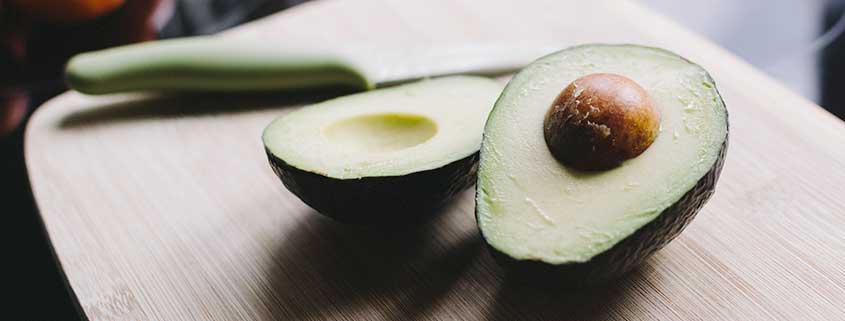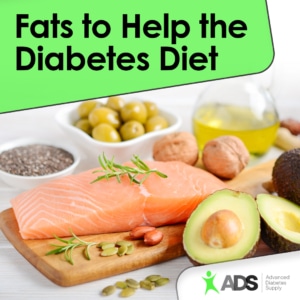
Do you think you need to cut out all fat sources for your diabetes diet to be successful? The truth isn’t that simple. In this article, you’ll find our breakdown of what fats your diet should limit – and which fats you should try to eat while managing diabetes.
A successful diabetes diet can help you control diabetes symptoms while improving your health in other ways. A big part of this involves keeping a close eye on your carbohydrate intake. You should avoid junk food and other sources of processed carbs while continuing to eat reasonable portions of whole grains and fiber. But this isn’t the only step you’ll need to take when designing your diabetes diet. Common sense suggests that you’ll need to avoid fat at all costs, right?
Despite what you might think, the answer to this question isn’t simple. Like carbohydrates, there are good and bad fats – and while some fats can make diabetes management more difficult, others can actually make life easier for you. Here, the team at ADS will fill you in on the fats you should (and shouldn’t) steer clear of while following a diabetes diet.
Dietary Fats 101

If you have diabetes, your risk of heart disease is higher than average. That’s because this condition can damage your arteries unless your blood sugar control is excellent. In fact, about three out of four people who have diabetes die from some form of heart disease. This elevated risk exists whether you have type 1 diabetes, type 2 diabetes, or even gestational diabetes.
Because of this, it’s crucial to do what you can to lower your heart disease risk. Along with controlling your blood sugar, you’ll want to control your overall fat intake. The trick is that while you shouldn’t overeat any fat, some types of fat can be surprisingly helpful in controlled portions. When limited to 30 percent of your calorie intake per day, healthy fats can make it easier to control diabetes – or even play a role in preventing type 2 diabetes.
Monounsaturated Fat
There are two different types of cholesterol you should know about: HDL (or “good”) cholesterol and LDL (or “bad”) cholesterol. LDL cholesterol can build up along your blood vessels, eventually contributing to health problems. On the other hand, HDL cholesterol can absorb “bad” cholesterol, lowering your stroke and heart disease risk.
When eaten in moderation, monounsaturated fats can help lower the amount of LDL cholesterol in your bloodstream. Some sources of this type of fat include:
- Avocados
- Canola oil and olive oil
- Several nuts (including pecans, cashews, hazelnuts and almonds)
- Safflower oil
- Peanuts, peanut butter, and peanut oil
- Seeds like pumpkin and sesame seeds
Polyunsaturated Fat
The other “good” fat you should know about when putting your diabetes diet together is polyunsaturated fat. These fats have health benefits similar to those of monounsaturated fats. They, too, can help lower your LDL level.
Two subtypes of polyunsaturated fat are significant because the human body can’t produce them independently. These “essential fatty acids” can help to improve your heart health, too. One of these subtypes, Omega-3 fatty acids, is available in:
- Walnuts
- Oily fish (such as tuna, sardines, salmon, tuna, and mackerel)
- Flaxseeds/flaxseed oil
- Chia seeds
- Canola oil

Meanwhile, you can get Omega-6 fatty acids by eating:
- Walnuts
- Flaxseeds/flaxseed oil
- Eggs
- Canola oil
- Peanut butter
- Sunflower seeds
- Tofu
Saturated Fat
Of course, not all fats come with these health benefits. You should put effort into avoiding or limiting your saturated fat intake. This fat can increase your LDL levels, potentially leading to all kinds of health problems down the line. For most people with diabetes, getting less than 10 percent of your daily calories from these fats is ideal. Be sure to read Nutrition Fact labels on food packages too.
Oils that contain saturated fat include coconut oil, palm oil, and palm kernel oil. Saturated fats are also commonly found in animal products, such as:

- Fatback/salt pork
- Lard
- Fatty meats (bologna, hot dogs, bacon, sausage, etc.)
- Fatty dairy products (ice cream, whole milk, full-fat cheese, and others)
- Cream sauces
- Butter
- Gravy prepared with meat drippings
- Poultry skin
Trans Fat
Perhaps the worst type of fat for your health is trans fat. This type of fat is made when liquid oils are turned into solid fats through the process of hydrogenation. Trans fat can easily do damage to your blood cholesterol, it raises bad LDL levels and lowers good HDL levels, so it’s a good idea to avoid it whenever possible.
You’ll want to be aware of trans fats in foods like these:
- Processed snack foods and baked goods
- Shortening
- Margarine
- Some fast food items, including french fries
Get Healthy Fats With These Tips
Replacing unhealthy fats with healthy alternatives doesn’t have to be complicated! If you need some inspiration, get started with the ideas on this list:
- Half an avocado topped with sunflower seeds – double items for double nutrition.
- Add chopped olives to your salad or pizza.
- Add a tablespoon of ground flax seeds to smoothies, muffins, bread, salads, or oatmeal.
- Drizzle olive oil on bread or grilled veggies.
- Make some popcorn on the stove using canola oil.
- Top cereal, oatmeal, or salad with walnuts.
- Smear cashew butter on a banana or sliced apples.
- Dip your carrots and red pepper strips in hummus – the tahini is made from ground sesame seeds.
- For a change of pace, mix pesto into your pasta instead of tomato sauce. Pine nuts are a type of polyunsaturated fat.
- Add raw almonds to your smoothie.
- Snack on some pistachios or almonds (unsalted).
- Snack on homemade trail mix made with peanuts and raisins.
- Make your own salad dressing with canola or olive oil, vinegar, and herbs.
- Add ¼ cup of macadamia nuts to your favorite nonfat Greek yogurt and top with berries.
- Make your own Greek guacamole: puree avocado, add chopped olives and tomatoes, sprinkle with feta cheese.
Enhance Your Diabetes Management With Supplies From ADS
The best way to make sure your diabetes diet is working for you is regular blood glucose testing. You’ll need constant access to glucose meters and related testing supplies to perform these tests. If you need a trustworthy company to ship you these items and others, look no further than ADS!
